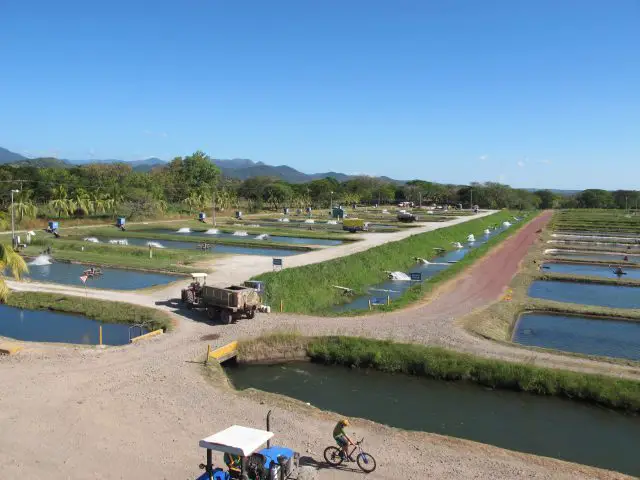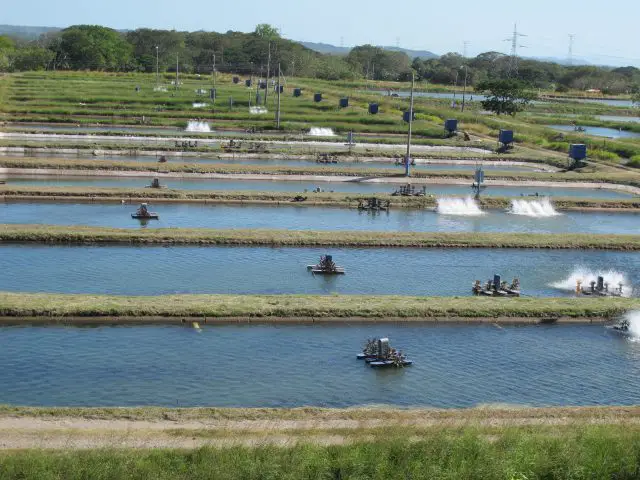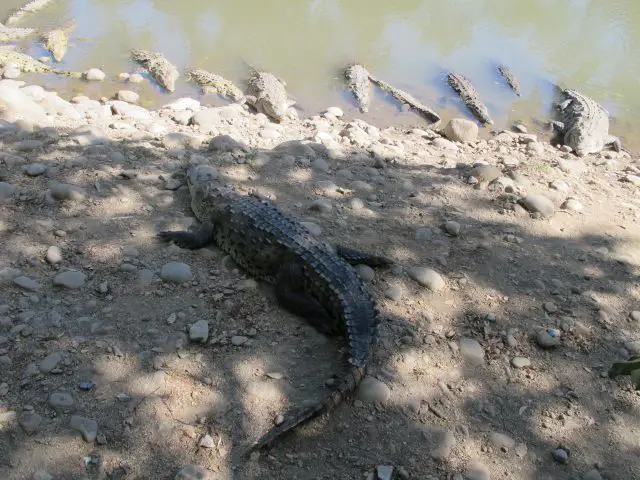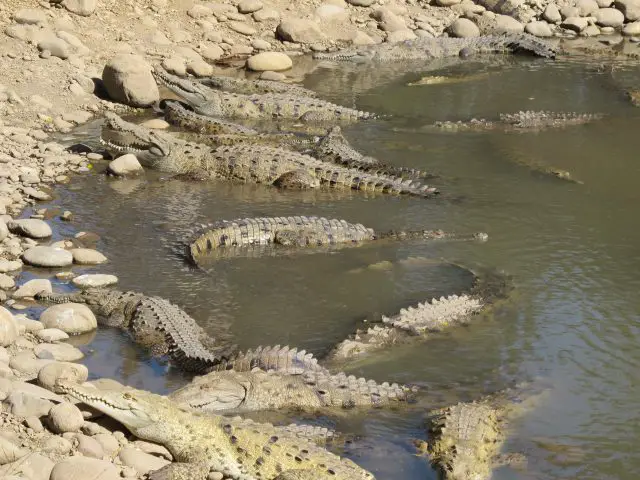| For more than 10 years, this transactional company dedicated to the cultivation and trade of tilapia had to create in Costa Rica one of the world’s strangest and most curious jobs: the “professional hunters of crocodiles”. |

The company arrived in the country in the mid-1980s and started production of tilapia industrially in Costa Rica. It was settled in the canton of Cañas, Guanacaste, and over the years became the largest producer of tilapia in the country. Nevertheless, never imagined that it should deal with a unique particularity of the Ticos land: the high population of crocodiles.
The company has about 600 hectares of land and dozens of ponds that take advantage of the waters of the Arenal reservoir and the irrigation connections of the River Tempisque basin. What they did not imagine was that crocodiles would use those same water connections to get from the river to their ponds, becoming a serious safety issue for their employees, and causing a significant reduction in their tilapia production. In short, the Tempisque crocodiles found in their ponds a free fish delicacy.

But how to solve it?
At first, they tried to set traps in the water channels to try to stop them, but they failed to diminish the visitation of the reptiles. A very complicated mission taking into account that the Tempisque is Costa Rica’s third largest river and home to one of the largest crocodile populations in Central America (since hunting was prohibited more than 15 years ago, the population of crocodiles in the river has increased).

Desperate for the situation and even worried by the safety of the animals, they had to go to the environmental authorities in search of advice. After a long search for solutions guided by the specialist biologists, the most successful solution was the creation of a gang of people who capture the crocodiles and take them out of the ponds. So strange as it sounded, the company had to create jobs for crocodile hunters.
How do they do that?
Juan Rafael Bolaños, a biologist and founder of the Association of Central American Cocodriles, described in the National University’s Ambitious magazine a summary of the work dynamics employed at Aqua Corporación to deal with reptiles.
Bolaños describes that it was necessary to certify 12 people in techniques of capture and manipulation of crocodiles. One of the curious anecdotes for this group of workers was to give them a policy against the risks of the trade because there was not even a similar trade or so risky in the country.

When one of the company’s employees watches a crocodile enter one of the ponds, it must immediately notify the capture crew, who reach the pond, place the animal and enter with an extended mesh, advance to corner the crocodile and catch it with the mesh.
Once trapped, they are removed from the water, disentangled from the mesh and introduced into rib-lock tubes of different diameters, from 12 to 20 inches. The animal removed from the mesh has tied the muzzle with a rope of 3 meters in length, covered his eyes and headed to a specialized and adapted place within the company, which functions as a temporary home for crocodiles. Then, guided by authorized biologists, these crocodiles are released into their habitat.
These animals are not easy to lose. In fact, in 2010, an experiment in which a group of six crocodiles was released on the Tárcoles River, in the central Pacific of Costa Rica, was made. At a distance of about 150 Kilometers, and from them, 3 were recaptured in the ponds 9 months later; while a fourth animal was recaptured 18 months later.
In other words, whether they want it or not, the company has had to learn to coexist with this unique feature of Costa Rica, a phenomenon that shows us that it is possible to create sustainable solutions between industry and nature; but above all that shows us the courageous spirit of these Guanacaste, who are engaged in one of the most dangerous and strange jobs in the world.
